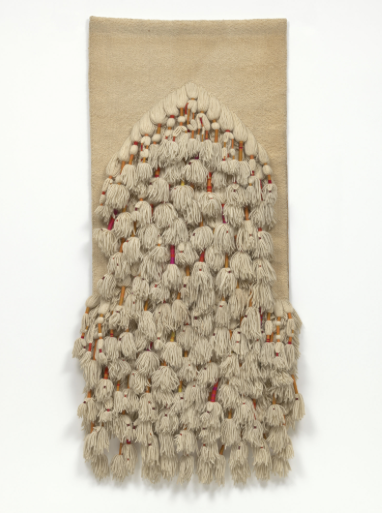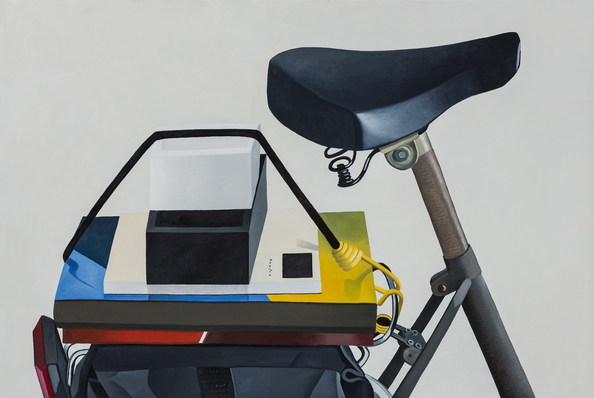Anniversary Alert: 10 Years of Feminist Art in Brooklyn;
More Chances to Celebrate at MOMA, LongHouse Reserve and elsewhere

Faith Ringgold, Early Works #25: Self-Portrait, Oil on canvas, 50 x 40 in. (127 x 101.6 cm), 1965. Brooklyn Museum, Gift of Elizabeth A. Sackler, 2013.96. © artist or artist’s estate.
Photo: Jim Frank
Lots of opportunities to see work by women artists and consider their role in the canon. The centerpiece are the exhibitions and events that make up A Year of Yes: Reimagining Feminism at the Brooklyn Museum which celebrates the10th anniversary of the Elizabeth A. Sackler Center for Feminist Art. A Year of Yes recognizes feminism as a force for progressive change and takes the contributions of feminist art as its starting point. It reimagines next steps, expanding feminism from the struggle for gender parity to embrace broader social-justice issues of tolerance, inclusion, and diversity. Among the exhibitions on view is We Wanted a Revolution: Black Radical Women, 1965–85, through September 17th, which presents a large and diverse group of artists and activists who lived and worked at the intersections of avant-garde art worlds, radical political movements, and profound social change, the exhibition features a wide array of work, including conceptual, performance, film, and video art, as well as photography, painting, sculpture, and printmaking. Faith Ringgold, known for her quilts among other works, protested in the early 70s the Whitney Biennial’s prepondence of male artists. Ringgold also visited incarcerated women at Riker’s Island, and created a large painting there using their narratives, which is part of We Wanted a Revolution. Others artist included Alva Rogers, Alison Saar, Betye Saar, Coreen Simpson, Lorna Simpson, Ming Smith, and Carrie Mae Weems. Know before you go, with this primer from Artspace, “6 Black Radical Female Artists to Know Before You See We Wanted a Revolution: Black Radical Women, 1965–85.” If you are tied up for the next month, you have a second chance to see the exhibition at the ICA in Boston when it opens there next June 26th.
Also upcoming at the Brooklyn Museum is Roots of “The Dinner Party”: History in the Making which opens October 20, 2017 and runs through March 2018. Since the 1970s, Judy Chicago has been a pioneer in the development of feminism as an artistic movement and an educational project that endeavors to restore women’s place in history. Her most influential and widely known work is the sweeping installation The Dinner Party (1974–79), on which Judy Mulford worked, celebrating women’s achievements in Western culture in the form of a meticulously executed banquet table set for 39 mythical and historical women and honoring 999 others.Roots of “The Dinner Party”: History in the Making is the first exhibition to examine Chicago’s evolving plans for The Dinner Party in depth, detailing its development as a multilayered artwork, a triumph of community art-making, and a testament to the power of historical revisionism. Chicago’s ambitious research project combatted the absence of women from mainstream historical narratives and blazed the trail for feminist art historical methodologies in an era of social change. It also validated mediums traditionally considered the domain of women and domestic labor, as the artist studied and experimented with China painting, porcelain and needlework.

Sheila Hicks, Prayer Rug, Hand-spun wool, 87 × 43″ (221
× 109.2 cm), 1965, The Museum of Modern Art, New York. Gift of Dr. Mittelsten Schied, 1966
But that’s not all. You still have four days to see the acclaimed MOMA exhibition, Making Space: Women Artists and Postwar Abstraction which includes 100 works that “range from the boldly gestural canvases of Lee Krasner, Helen Frankenthaler, and Joan Mitchell; the radical geometries by Lygia Clark, Lygia Pape, and Gego; and the reductive abstractions of Agnes Martin, Anne Truitt, and Jo Baer; to the fiber weavings of Magdalena Abakanowicz, Sheila Hicks, and Lenore Tawney; and the process-oriented sculptures of Lee Bontecou, Louise Bourgeois, and Eva Hesse. The exhibition will also feature many little-known treasures such as collages by Anne Ryan, photographs by Gertrudes Altschul, and recent acquisitions on view for the first time at MoMA by Ruth Asawa, Carol Rama, and Alma Woodsey Thomas.” Again, you can become well-informed before your visit (or visit online in lieu of inperson) with online resources, YouTube presentations, one when the exhibition opened and another, a tour of the exhibition with a MOMA curator.
Beginning on September 13th, the ICA, University of Pennsylvania in Philadelphia, will present Nathalie Du Pasquier: BIG OBJECTS NOT ALWAYS SILENT, a retrospective exploring the prolific creative practice of artist and designer Nathalie Du Pasquier on view from September 13 through December 23, 2017. A founding member of the Italian design collective Memphis, Du Pasquier’s work across painting, sculpture, drawing, installation and design demonstrates a unique and considered interpretation of space and objects. A catalog will accompany the exhibition. A collection of graphic and whimsical textile designs by Nathalie Du Pasquier and George Sowden has been released by 4 Spaces and Zigzag Zurich.

Nathalie Du Pasquier, Still life on my bicycle, oil on canvas, 39 x 59 inches, 2005. Courtesy of Kunsthalle Wien and the Institute of Contemporary Art at the University of Pennsylvania
Must these artists be categorized as “women artists”? That’s just one of the questions that Hampton’s artist, Toni Ross hopes to explore ina series of conversations at LongHouse Reserve in East Hampton, New York. “In my mind this is a complex issue,” she writes. “I do believe that there are forces that confront all non-white male artists and that that conversation is evolving and changing rapidly. The Hamptons, with its rich history of artists includes many important women who broke ground for us, many whom may have been overshadowed by their more recognized partners. I look forward to the conversations in all of their complexities.” The conversations, in WOMEN ARTISTS: Reshaping the Conversation, A series of panel discussions in the LongHouse Garden will unfold in three events, beginning this Saturday:
